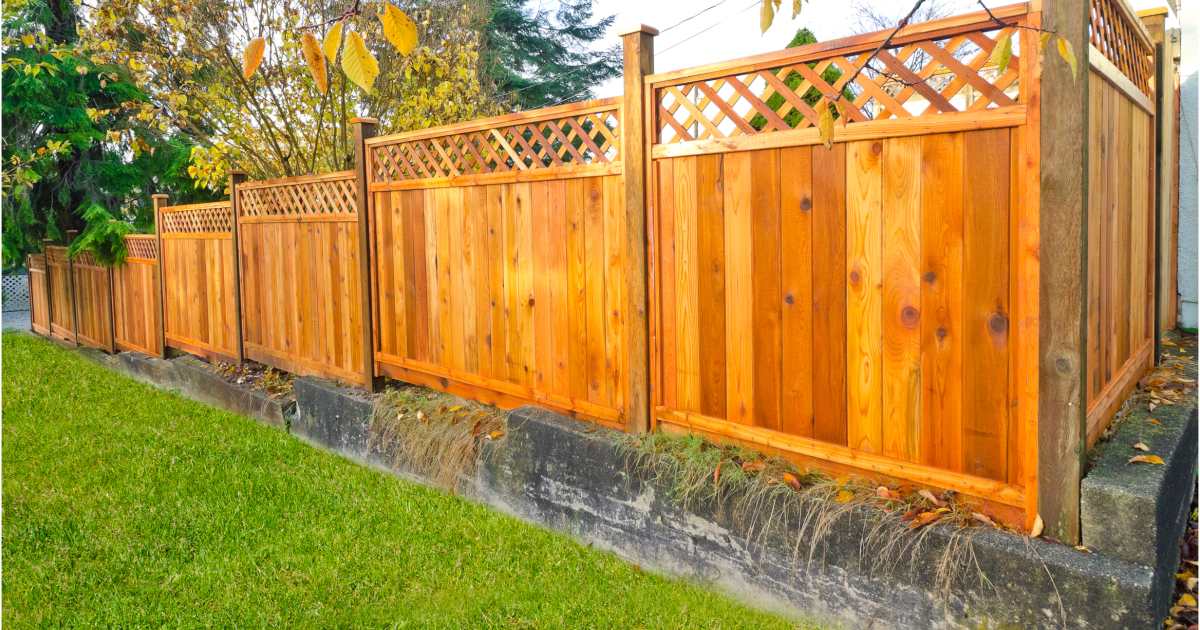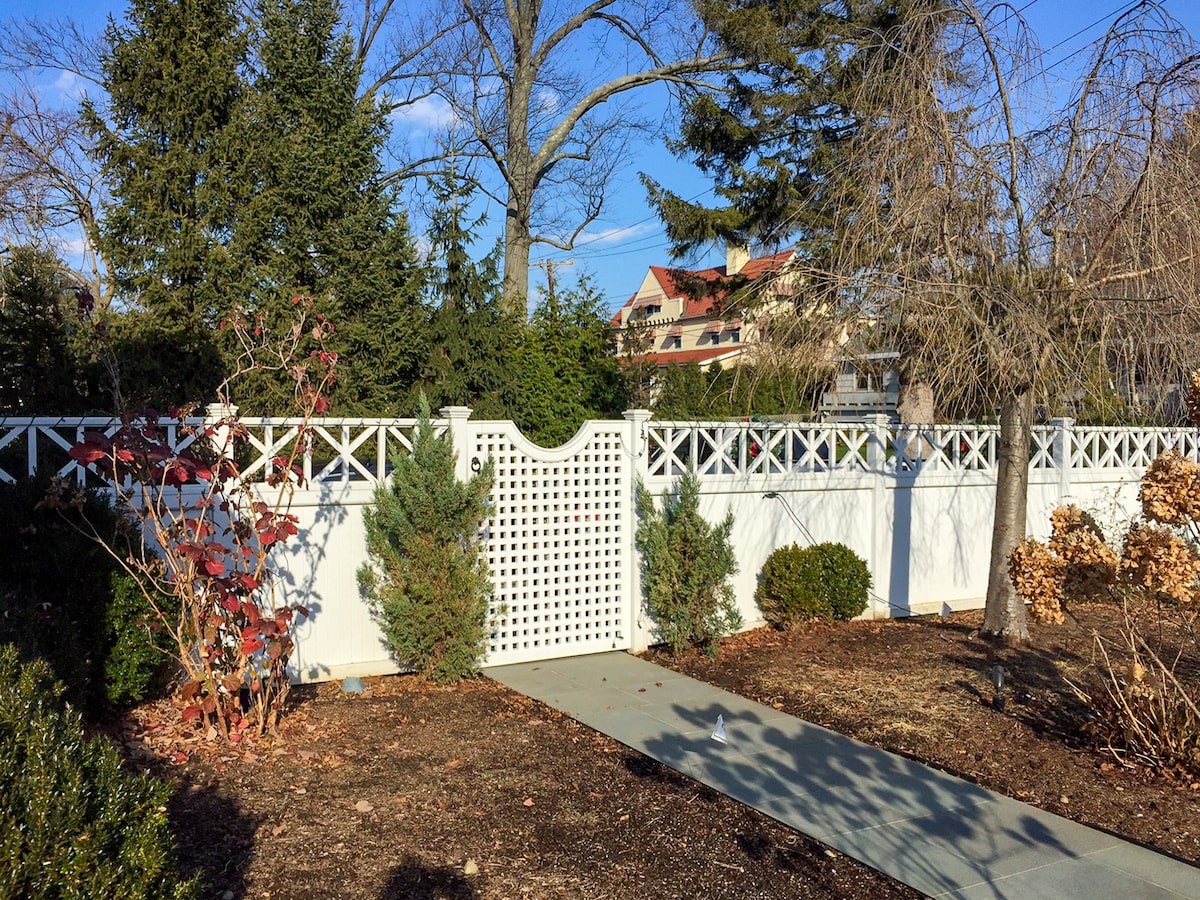All Categories
Featured
When it pertains to keeping a wood fence, house owners often encounter the decision of whether to paint or stain. Both choices have their cons and pros, and the selection eventually depends on your aesthetic preferences, the sort of wood, and just how much maintenance you're prepared to dedicate to. Right here's a thorough comparison to help you make an educated decision.
The Fundamentals of Painting and Staining
Paint entails covering the wood with an opaque layer of color. It provides full coverage, concealing the timber grain while using exceptional defense versus environmental aspects.
Staining passes through the timber, improving its natural charm while adding a protective layer. Depending on the kind, discolorations can vary from transparent to solid, allowing differing degrees of wood grain exposure.
Benefits And Drawbacks of Paint
Pros:
Wide Variety of Color styles: Paint offers unlimited color alternatives, enabling you to match your fencing to your home's exterior or personal design.
Longer Long-term: High-quality outside paint can last as much as 5-7 years, requiring much less frequent reapplication.
Superior Security: Paint kinds a thick, strong barrier versus dampness, UV rays, and bugs.
Disadvantages:
Peeling and Splitting: Gradually, paint can peel off or break, especially in locations with extreme weather conditions.
Hides Natural Timber Appeal: If you love the natural grain of wood, paint might not be the ideal selection.
Greater Upkeep: Repainting needs removing the old paint, which can be labor-intensive.
![]()
Advantages And Disadvantages of Discoloration
Pros:
Natural Appearance: Stains protect and enhance the natural elegance of the wood, making it perfect for high-quality timber like cedar or redwood.
Less Complicated to Reapply: Unlike paint, spots don't fracture or peel. Reapplying tarnish normally needs much less surface area prep work.
Flexible Complete Choices: Spots been available in clear, semi-transparent, and solid ranges, supplying different degrees of insurance coverage.
Disadvantages:
![]()
Much Shorter Life-span: Discolorations, semi-transparent and specifically transparent ones, might need reapplication every 2-3 years.
Limited Shade Alternatives: While stains supply natural tones, they do not have the wide color combination available with paint.
Less Safety: Discolorations pass through the wood but don't give as thick a barrier as paint, making them a little much less safety against extreme climate.
Elements to Consider
Aesthetic Preferences: If you want dynamic shades and complete insurance coverage, paint is the way to go. For a natural and rustic appearance, opt for tarnish.
Timber Kind: High-grade woods with lovely grains profit from staining, while lower-grade woods can be painted for a sleek look.
![]()
Environment: In damp or moist climates, paint's thicker obstacle might use much better security. In moderate or completely dry environments, discolorations can be enough.
Upkeep Dedication: Painting entails less frequent reapplication however more effort during touch-ups. Discoloration needs routine maintenance however is easier to manage.
Last Thoughts
Both paint and discoloration can successfully secure and improve your wood fencing. The very best choice relies on your priorities, whether they favor aesthetic appeals, longevity, or ease of upkeep. By recognizing the advantages and downsides of each, you can select the surface that aligns with your needs and ensures your fence remains a standout function of your residential or commercial property for years to find.
The Fundamentals of Painting and Staining
Paint entails covering the wood with an opaque layer of color. It provides full coverage, concealing the timber grain while using exceptional defense versus environmental aspects.
Staining passes through the timber, improving its natural charm while adding a protective layer. Depending on the kind, discolorations can vary from transparent to solid, allowing differing degrees of wood grain exposure.
Benefits And Drawbacks of Paint
Pros:
Wide Variety of Color styles: Paint offers unlimited color alternatives, enabling you to match your fencing to your home's exterior or personal design.
Longer Long-term: High-quality outside paint can last as much as 5-7 years, requiring much less frequent reapplication.
Superior Security: Paint kinds a thick, strong barrier versus dampness, UV rays, and bugs.
Disadvantages:
Peeling and Splitting: Gradually, paint can peel off or break, especially in locations with extreme weather conditions.
Hides Natural Timber Appeal: If you love the natural grain of wood, paint might not be the ideal selection.
Greater Upkeep: Repainting needs removing the old paint, which can be labor-intensive.

Advantages And Disadvantages of Discoloration
Pros:
Natural Appearance: Stains protect and enhance the natural elegance of the wood, making it perfect for high-quality timber like cedar or redwood.
Less Complicated to Reapply: Unlike paint, spots don't fracture or peel. Reapplying tarnish normally needs much less surface area prep work.
Flexible Complete Choices: Spots been available in clear, semi-transparent, and solid ranges, supplying different degrees of insurance coverage.
Disadvantages:

Much Shorter Life-span: Discolorations, semi-transparent and specifically transparent ones, might need reapplication every 2-3 years.
Limited Shade Alternatives: While stains supply natural tones, they do not have the wide color combination available with paint.
Less Safety: Discolorations pass through the wood but don't give as thick a barrier as paint, making them a little much less safety against extreme climate.
Elements to Consider
Aesthetic Preferences: If you want dynamic shades and complete insurance coverage, paint is the way to go. For a natural and rustic appearance, opt for tarnish.
Timber Kind: High-grade woods with lovely grains profit from staining, while lower-grade woods can be painted for a sleek look.

Environment: In damp or moist climates, paint's thicker obstacle might use much better security. In moderate or completely dry environments, discolorations can be enough.
Upkeep Dedication: Painting entails less frequent reapplication however more effort during touch-ups. Discoloration needs routine maintenance however is easier to manage.
Last Thoughts
Both paint and discoloration can successfully secure and improve your wood fencing. The very best choice relies on your priorities, whether they favor aesthetic appeals, longevity, or ease of upkeep. By recognizing the advantages and downsides of each, you can select the surface that aligns with your needs and ensures your fence remains a standout function of your residential or commercial property for years to find.
Latest Posts
Take Advantage of Special Auto Repair Offers in Chicago at Montclare Auto Repair
Published en
1 min read
Secure and Improve Your Home with Weathercraft's Exterior siding Solutions
Published en
1 min read
Explore Budget-Friendly Auto Repairs with Montclare’s Monthly Service Specials
Published en
1 min read
More
Latest Posts
Take Advantage of Special Auto Repair Offers in Chicago at Montclare Auto Repair
Published May 28, 25
1 min read
Secure and Improve Your Home with Weathercraft's Exterior siding Solutions
Published May 25, 25
1 min read
Explore Budget-Friendly Auto Repairs with Montclare’s Monthly Service Specials
Published May 24, 25
1 min read